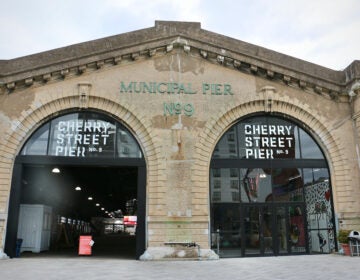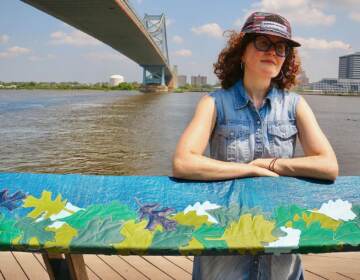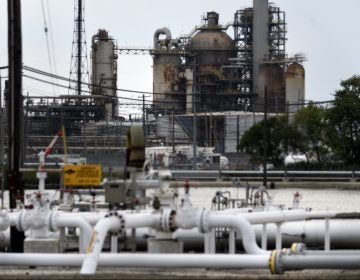Investors pour $1B into Delaware River waterfront projects over 10 years
There’s a steady pipeline of projects planned along the Philly waterfront — including apartments, retail and a public park — even though one developer paused mid-construction.
Listen 1:11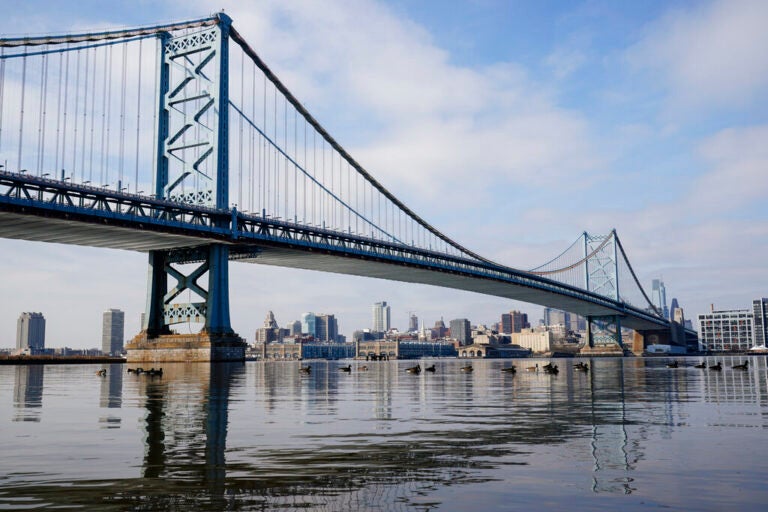
File photo: The Benjamin Franklin Bridge spanning the Delaware River between Camden N.J., foreground, and Philadelphia is seen, Wednesday, Feb. 10, 2021. (AP Photo/Matt Rourke)
From Philly and the Pa. suburbs to South Jersey and Delaware, what would you like WHYY News to cover? Let us know!
In the past decade, private developers invested about $1 billion into the Delaware River waterfront — mostly for mixed-use and residential developments, according to an economic impact report commissioned by the nonprofit Delaware River Waterfront Corporation.
Public infrastructure money to build parks and trails along the riverfront is meant to spur private investment and keep the river accessible to the public.
The goal is to help foster projects like Rivermark Northern Liberties, a $223 million mixed-use development near Spring Garden Street and Columbus Boulevard, said Joe Forkin, president and CEO of the DRWC.
In the coming months, the site that’s been a trash incinerator, a vehicle impound lot and an outdoor music venue over the years will become apartments, retail and a public park that connects to the Delaware River Trail.
“We spent many many years cleaning this [site] out to a residential standard,” Forkin said. “It’s going to be a spectacular showcase for everything the master plan endorsed, a really great connection to the river both visually and physically, the connection of the trails that comes through and a street connector [project].”
While about $1 billion was spent on projects in the past decade, an economic impact study by Econsult Solutions Inc. forecasts another $10 billion will be invested by the private sector in the next decade.
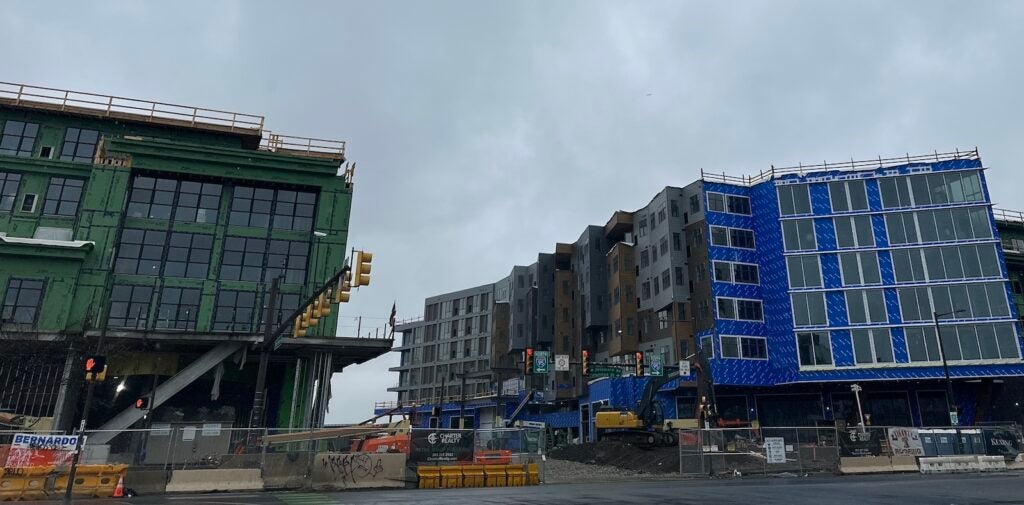
There was about $100 million in public funds spent between 2014 and 2024. Another $500 million in public money is expected to be spent by 2034. Unlike some waterfronts, much of the land along the Delaware River is privately held so the nonprofit had to purchase property first and improve the site.
“As a catalyst for private development to come along to get this truly Philadelphia waterfront that is world-class and a new neighborhood for the city,” Forkin said.
In the past decade, there’s been more than 1,200 new residential permits for projects under construction along the 6-mile stretch of the Delaware Riverfront compared to dozens of new commercial building permits.
And that’s been by design.
“We encourage mixed-use development on the riverfront. We want to see vibrant art scenes,” he said. “We want to see restaurants, food and beverage operations for people to gather and experience entertainment. All of that stuff is part of the plan.”
The biggest public investment will be a $329 million pedestrian-friendly highway cap at Penn’s Landing over Interstate 95, known as the Central Access Philadelphia project. The goal is to connect Center City to the Delaware River waterfront and build 12 acres of parkland.
The Penn’s Landing redevelopment is a mixed use project expected to cost $2.2 billion and will be developed by New York developer The Durst Organization. That same developer paused construction of a $300 million, 26-story apartment tower after building the foundation but promised it would pick the project back up in the coming years.
It’s unclear how much of a slowdown there will be in construction along the waterfront, as there’s more saturation in the market for residential properties and higher interest rates.
It costs about 20% more for developers to build along the waterfront due to soil conditions and other considerations, but it’s still considered prime real estate because there’s limited space to build, Forkin said.
There’s also some redevelopment of existing historic structures, like the $200 million project The Battery, a retrofitted PECO generation station that sits next to Penn Treaty Park. The Delaware River Waterfront Corporation is chipping in $1.5 million to continue the Delaware River Trail in front of The Battery.
The $200 million Northbank residential development near Graffiti Pier in Fishtown already built hundreds of homes, with plans to have at least 700 units overall.
The Delaware River Waterfront Corporation expects to redevelop Graffiti Pier into a public park. About $1.3 million was budgeted for initial planning and land acquisition. Another $2.3 million was for the first phase and $30 million was for future park improvements at Graffiti Pier. There’s $1.5 million earmarked for the Delaware River Trail extension in front of Northbank and $2 million was spent to acquire land by the nonprofit.
Officials are hoping for the same demand for vacant land further north in Port Richmond.
“There are still wide swaths of area especially adjacent to the river that are available for development,” Forkin said.

Get daily updates from WHYY News!
WHYY is your source for fact-based, in-depth journalism and information. As a nonprofit organization, we rely on financial support from readers like you. Please give today.


